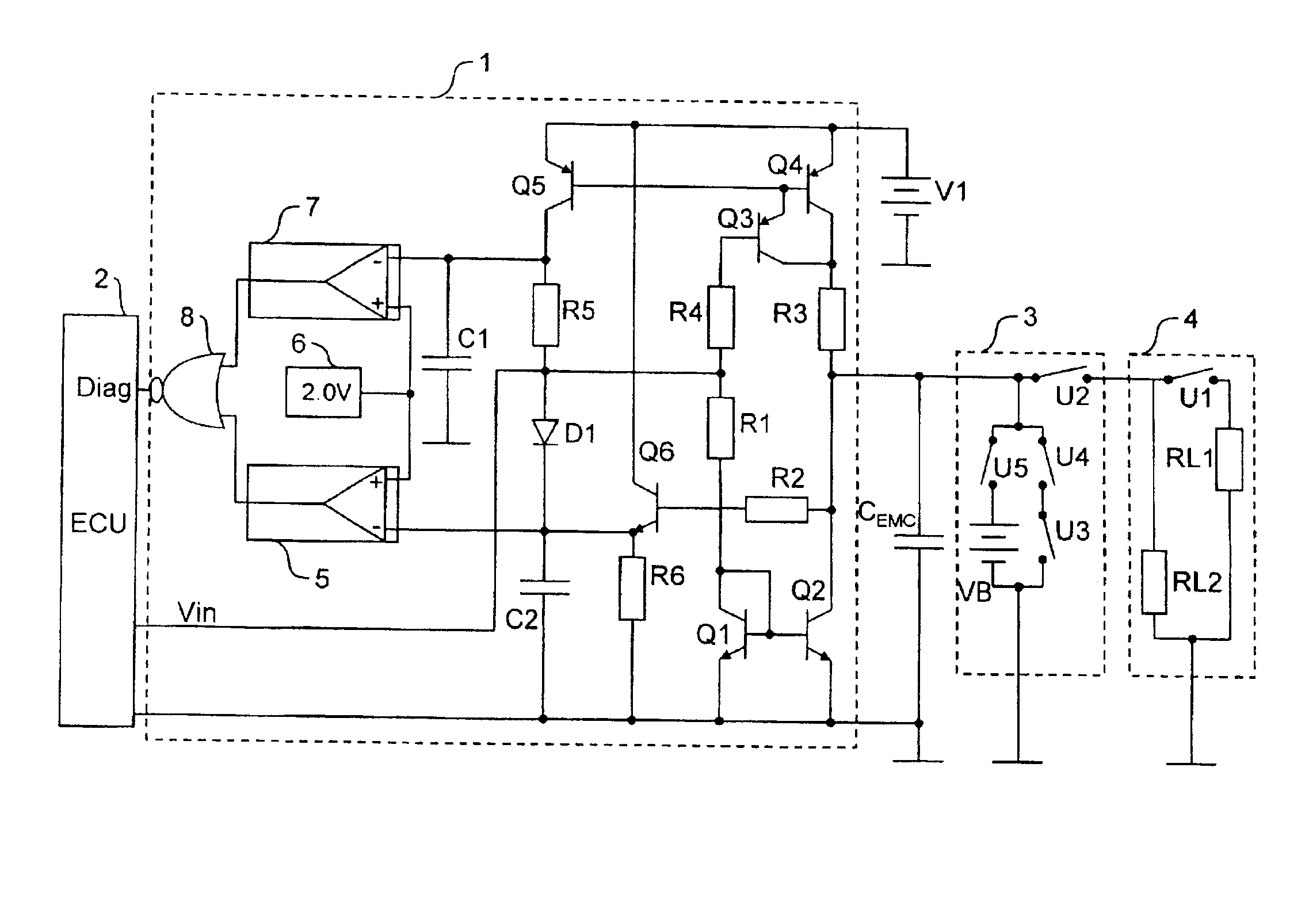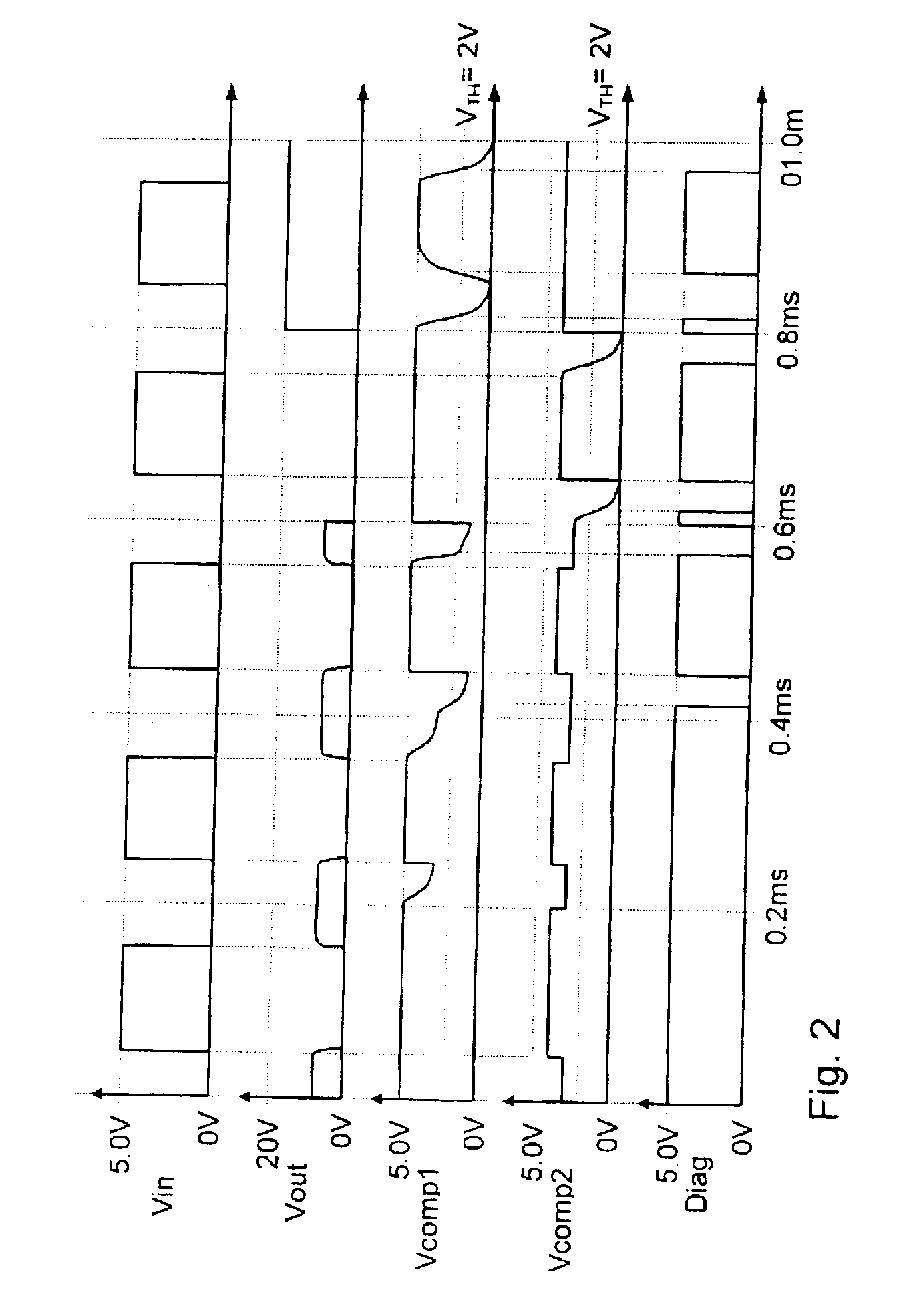Driver circuit
a technology of driving circuit and drive current, which is applied in the direction of electric control, measurement using digital techniques, instruments, etc., can solve the problems of reducing output current, reducing output current, and increasing current beyond normal load current, so as to avoid fault-related discrepancies in much smaller load currents
- Summary
- Abstract
- Description
- Claims
- Application Information
AI Technical Summary
Benefits of technology
Problems solved by technology
Method used
Image
Examples
Embodiment Construction
[0035]The text below first describes the structural design of the circuit shown in FIG. 1, which will then be followed by an explanation of the way in which it works.
[0036]The circuit diagram shown in FIG. 1 shows an inventive driver circuit 1 which is actuated by an electronic engine controller 2 (ECU—Electronic Control Unit) using a control input Vin, with the driver circuit 1 also returning a diagnostic signal DIAG to the engine controller 2, as will subsequently be explained in detail.
[0037]The output side of the driver circuit 1 is connected by means of a schematically shown control line 3 to an ignition output stage 4, which is likewise shown only schematically.
[0038]In this context, the ignition output stage 4 is shown as an equivalent circuit diagram comprising a switch U1 and two load resistors RL1=2 kΩ and RL2=200 kΩ. The switch U1 in this case allows the load resistance of the ignition output stage 4 to be varied in line with the respective operating state of the ignition...
PUM
 Login to View More
Login to View More Abstract
Description
Claims
Application Information
 Login to View More
Login to View More - R&D
- Intellectual Property
- Life Sciences
- Materials
- Tech Scout
- Unparalleled Data Quality
- Higher Quality Content
- 60% Fewer Hallucinations
Browse by: Latest US Patents, China's latest patents, Technical Efficacy Thesaurus, Application Domain, Technology Topic, Popular Technical Reports.
© 2025 PatSnap. All rights reserved.Legal|Privacy policy|Modern Slavery Act Transparency Statement|Sitemap|About US| Contact US: help@patsnap.com



